Exploring Earth-like Exoplanets: Key Factors Influencing Habitability
Since the first exoplanet was discovered orbiting a Sun-like star in 1995¹ scientists have discovered over 5,000 confirmed exoplanets, all of which have been discovered in the last 30 years.
It is estimated that there are billions of Earth-like exoplanets, orbiting Sun-like stars, within a star’s habitable zone just in our Milky Way galaxy alone. Even if only a small percentage of these planets have the right conditions to sustain life as we know it, this still represents a huge number of habitable worlds where the possibility for life is significant.
To date out of the 5000+ confirmed exoplanets² dozens have been found to be similar to the Earth.
Measuring Exoplanet Habitability with the Earth Similarity Index
To help provide a quick way of assessing how similar a particular exoplanet is to Earth it is scored using a simple measure called the Earth Similarity Index (ESI).
The ESI scores an exoplanet on several key physical characteristics such as mass, size, distance from its host star and its equilibrium surface temperature (this is the temperature the planet would have without an atmosphere). The Earth has an ESI score of 1 (most similar to Earth), whereas a planet with no similarity to the Earth will score zero.
For reference, Mars has an ESI of 0.70, Venus 0.44, and a gas giant like Jupiter scores 0.293.
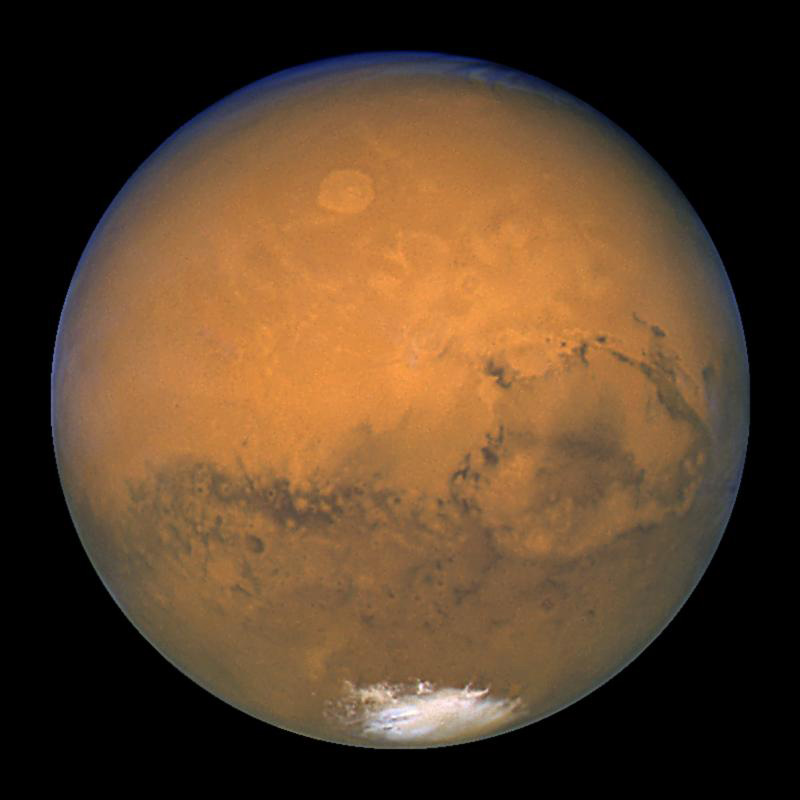
There are likely to be many worlds out there more similar to the Earth than Mars is, could one of these distant worlds support life? Credit: NASA et al.
Exoplanets that score above 0.8 are likely to be good candidates worthy of further investigation.
It should be noted that the ESI is not a rigorous quantitative method for characterising an exoplanet’s habitability, but it does allow astronomers to screen for planets that are comparable to the Earth, which is currently the only planet known to harbour life.
Using the ESI it is possible to trim the list of exoplanets down from over 5000 to just the dozen or so most promising candidates.
The below table shows some of the highest-scoring Earth-like exoplanets on the Earth Similarity Index discovered to date.
Name | Mass (xEarth) | Radius (xEarth) | Equilibrium Surface temperature (°C) | Distance from Earth (light years) | Earth Similarity Index (ESI) |
|---|---|---|---|---|---|
Teegarden's Star b | >1.05 | ~1.02 | 25 | 12 | 0.95 |
TOI-700 d | ~1.57 | 1.14 | 5 | 101 | 0.93 |
Kepler-1649 | ~1.20 | 1.06 | 30 | 301 | 0.92 |
TRAPPIST-1 d | 0.39 | 0.78 | 23 | 41 | 0.91 |
LP 890-9 c | - | 1.37 | 8 | 106 | 0.89 |
Proxima Centauri b | >1.27 | ~1.08 | -16 | 4.2 | 0.87 |
K2-72 e | ~2.21 | 1.29 | 34 | 217 | 0.87 |
GJ 1002 b | >1.08 | ~1.03 | -12 | 16 | 0.87 |
GJ 1061 d | >1.64 | ~1.15 | -26 | 12 | 0.86 |
GJ 1061 c | >1.74 | ~1.18 | 38 | 12 | 0.86 |
The data in this table is adapted from the Habitable Exoplanets Catalogue provided by the Planetary Habitability Laboratory (PHL)³. This is an excellent resource for all things exoplanets.
Does a high Earth Similarity Index mean an exoplanet is habitable?
The ESI score alone does not indicate whether an Earth-like exoplanet has the right conditions to support life.
Exoplanet habitability is more complex and needs to take into account several other factors that directly affect the planet.
Several of these factors are outlined below, if an exoplanet has a high ESI score astronomers would also look to consider these factors to determine the planet’s overall habitability potential.
An exoplanet’s host star needs to be stable
Our Sun is a very stable star with an energy output that varies by <0.1%. Even these small fluctuations in the Sun’s energy output have the potential to negatively affect the climate here on Earth.
Stars that are naturally more unstable than our Sun would experience more significant variations in energy output. The resulting climatic variations for an exoplanet orbiting one of these variable stars would be dramatic, increasing or reducing the planet’s temperature too quickly for life to adapt.
Rapid rises in stellar luminosity also increase the stellar radiation (or stellar wind) incident on the planet. Unless the planet has a strong magnetic field to protect it, like the Earth, then this stream of high-energy particles emitted from the star will eventually strip away any water or atmosphere from the planet, leaving it barren and lifeless.
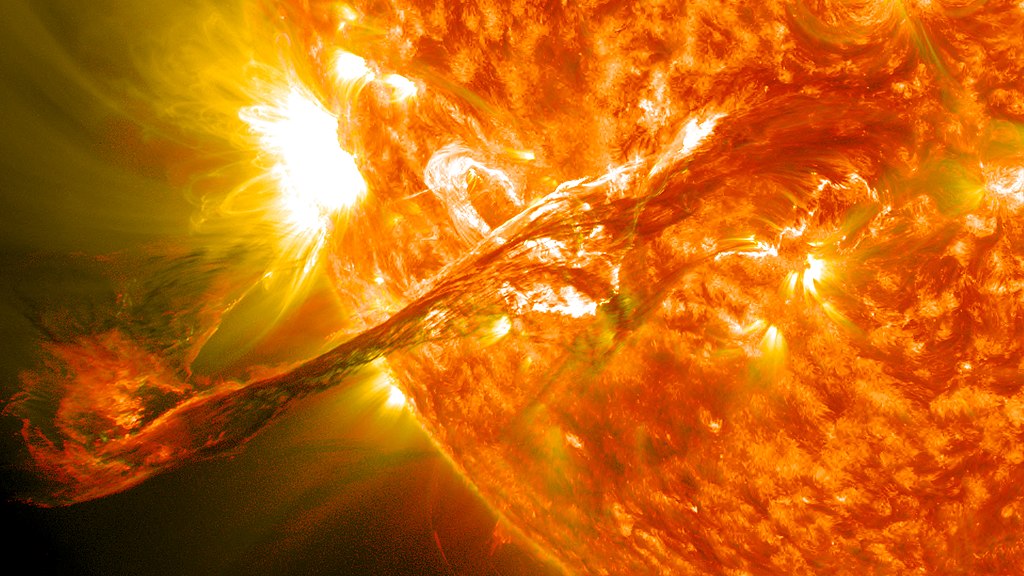
Stellar flares like this giant one ejected by our Sun could reek havoc on exoplanets that orbit close to their parent star. Credit: NASA/GSFC/SDO
Even small red and brown dwarf stars which have a much lower energy output than our Sun, are prone to excessive flare activity or prolonged dimming. This is especially problematic for exoplanets that orbit these small cool stars as the habitable zone is located very close to the star (much closer than the distance of Mercury’s orbit around the Sun). Any large changes in stellar output or flaring could have catastrophic consequences for any life on these planets.
Exoplanets that orbit stable stars similar to our Sun offer the best potential for life to develop and evolve.
If a planet orbits too close to its host star, it will be tidally locked
This orbital property means that one side of the planet will always face its host star. Similar to how the Moon always presents the same face to us here on Earth. The result of this is that the side facing the star would experience searing temperatures, whereas on the dark side the temperature would plumet to hundreds of degrees below zero.
Many rocky Earth-like exoplanets discovered orbit small dwarf stars4. The habitable zone around these small stars is located very close to the star and any planets orbiting in this Goldilocks zone would be tidally locked.
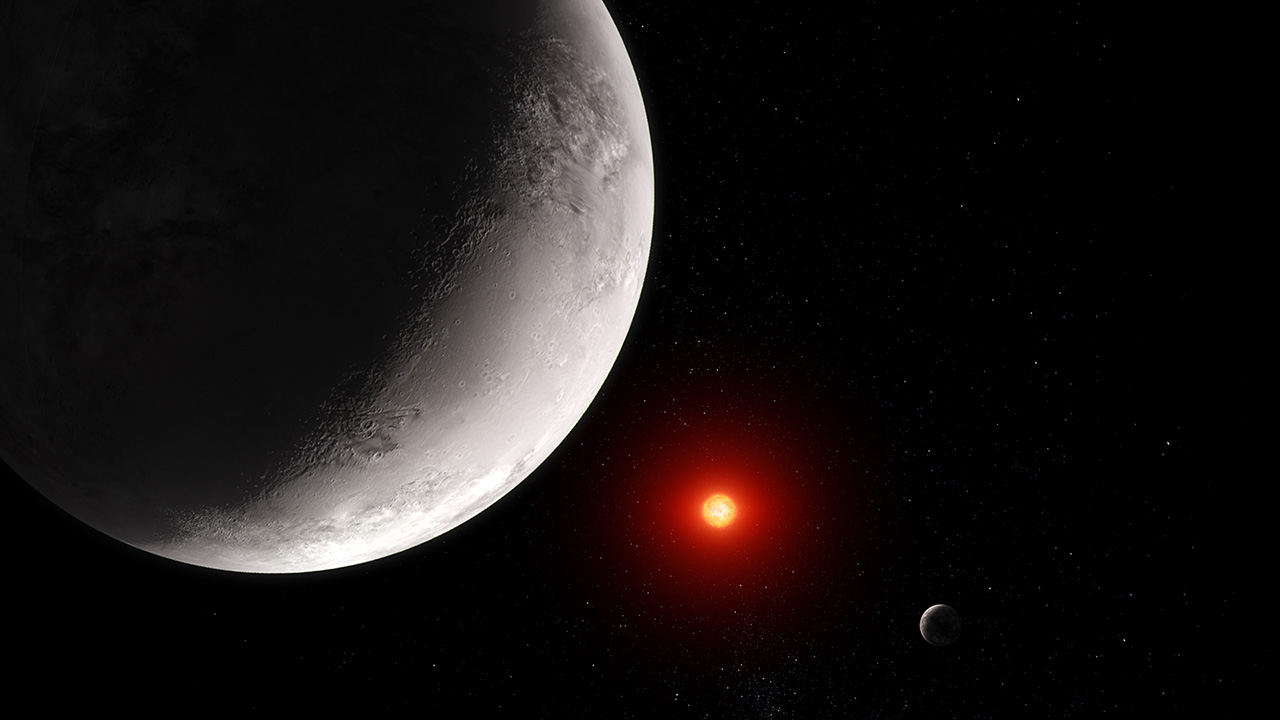
Could there be liquid water or perhaps even life at the boundary between day and night on a tidally locked exoplanet? Credit: NASA, ESA, CSA, Joseph Olmsted (STScI)
This is not so great for the chances of finding a habitable planet, but even tidally locked planets offer possibilities for liquid water and perhaps even life.
If the planet holds an atmosphere, then some of the heat from the day side will be distributed around to its dark side, due to the greenhouse effect. However, unless the atmosphere is thick enough it is unlikely to create enough of an effect to overcome the temperature extremes and it would be difficult for life to establish a foothold on these captured planets.
The best chance for life on a tidally locked planet would lie along the boundary between day and night, also known as the terminator. This thin shadowy strip may sustain temperatures between the hot day side and frozen night side that would allow for liquid water and potentially life to exist.
An exoplanet should be massive enough to retain an atmosphere
Small planets struggle to retain an atmosphere.
An exoplanet should be massive enough so that it has enough gravity to retain a thick atmosphere. More massive planets have stronger gravity and, subsequently, a higher escape velocity. This is the speed needed to escape a planet’s gravity. The higher the escape velocity, the more difficult it is for atmospheric particles to outgas into the vacuum of space or be stripped away due to bombardment by stellar winds.
The planet essentially holds on to it.
An atmosphere provides several positive effects.
- An atmosphere can retain and distribute heat across the planet’s surface.
- An atmosphere absorbs damaging short-wavelength radiation from the star, similar to how the Earth’s ozone layer helps to protect us from harmful UV rays.
- An atmosphere provides protection from meteorite impacts; a thicker atmosphere will cause many smaller incoming meteoroids to burn up.
To retain a thick atmosphere, an exoplanet’s mass should be similar to or greater than Earth’s, somewhere between 0.5 and 5.0 Earth masses.
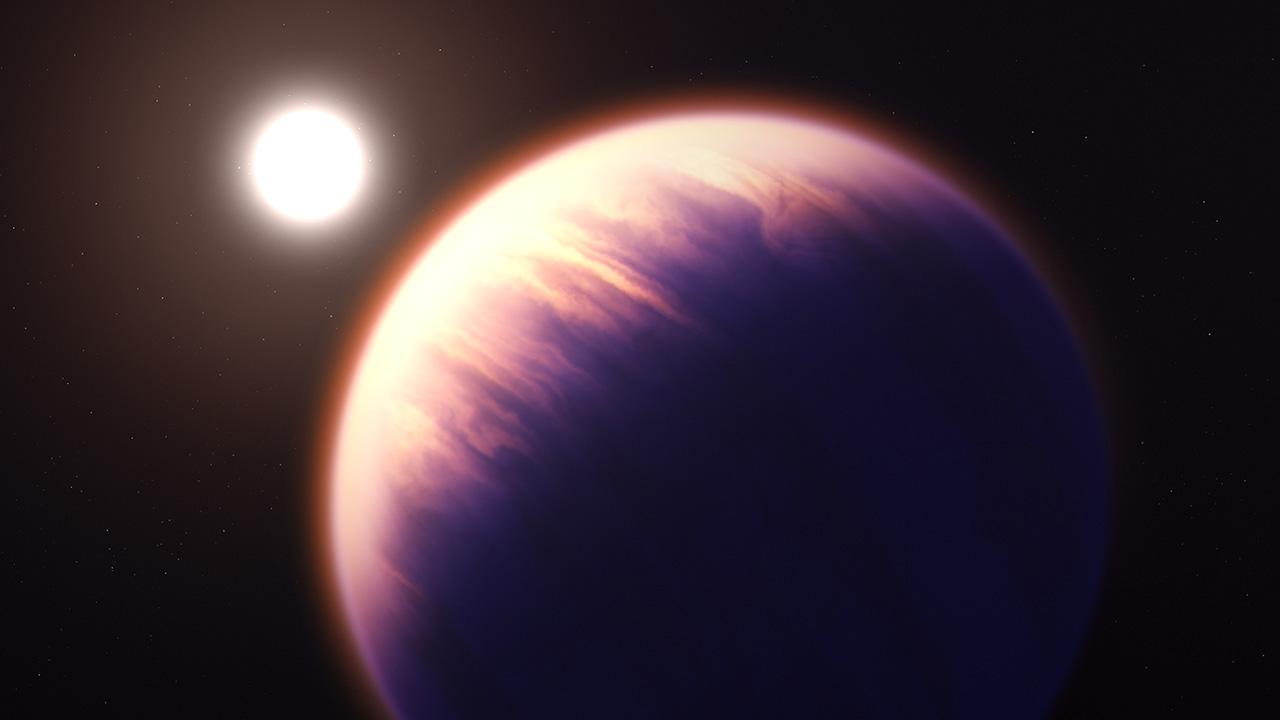
More massive exoplanets have more chance of retaining a thick atmosphere. Credit: NASA, ESA, CSA, Joseph Olmsted (STScI)
However, recent research5 suggests that an exoplanet with just 0.027 times the mass of the Earth can retain an atmosphere where liquid water might exist for long periods of time. This research was carried out on a specific type of exoplanet, known as a low-mass water world (a comet-like planet that contains about 40% water).
The possibility that suitable atmospheres and liquid water may exist on these low-mass planets is an intriguing new result and increases our chances of finding new habitable worlds.
A planet’s orbit should be round and not [too] egg-shaped
The Earth’s orbit is almost perfectly circular.
The roundness of a planet’s orbit is known as its eccentricity. The Earth’s orbital eccentricity is 0.0167 (a perfect circle is 0.00) so to all intents and purposes it has a circular orbit. This roundness ensures that the Earth-Sun distance remains almost constant throughout its orbit. Earth’s closest approach to the Sun (perihelion) is 147 million km and farthest approach (aphelion) is 152 million km.
A planet in an orbit with low eccentricity, like the Earth, will receive roughly the same amount of stellar radiation allowing it to maintain a stable temperature at all points in its orbit.
Most exoplanet orbits, however, are much more eccentric.
A large majority of exoplanets discovered have orbital eccentricities of over 0.256. This is greater than any planet in our Solar system. This means the planet will swing over 25% closer to its star at closest approach and over 25% further away at it most distant. This variation would cause significant temperature shifts, possibly of the order of 100s of degrees, which is not encouraging for the possibility of finding life.
The eccentricity of an exoplanet’s orbit should be low enough to ensure it is in a stable round orbit keeping the surface temperature and stellar radiation levels steady.
Role of Magnetic Fields in Supporting Exoplanet Life
The protective effect of the Earth’s magnetic field should not be understated.
This huge shield protects the Earth from both high-energy charged particles emitted by the sun and high-energy cosmic radiation. Without its protection, key parts of our atmosphere would be stripped away. This includes the ozone layer which shields us from harmful solar radiation.
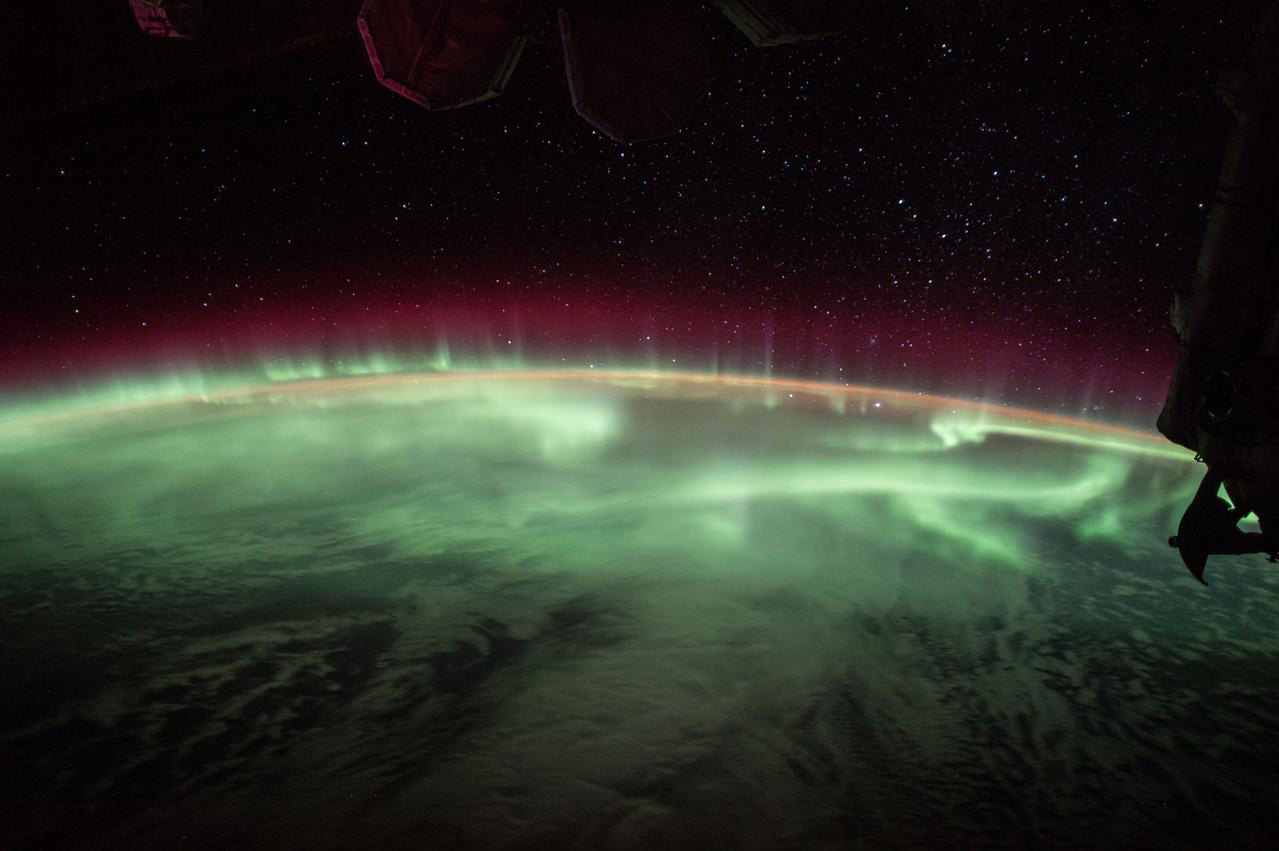
The Earth’s magnetic field protects us from the most damaging solar radiation and creates beautiful auroral displays in the process. Credit: NASA
The Earth’s magnetic field is generated by a hot iron and nickel core at its centre. The heat contained within the solid core creates strong convection currents in the molten iron that surrounds it. The motion of this electrically conductive material induces an electrical current, which in turn creates a magnetic field.
The strength of this magnetic field is further amplified by the rotation of the Earth. Due to the Coriolis effect, the convected material spirals upwards creating a dynamo. This dynamo effect helps to sustain and intensify the magnetic field making it strong enough to protect us from damaging radiation.
For an earth-like exoplanet to sustain a magnetic field it needs to be large enough to contain a hot dense iron core and rotate on its axis.
Smaller planets have a larger surface area to volume ratio, which makes them cool down more quickly after their formation than larger planets. If a planet has cooled too much it will be geologically dead, making the generation of a planetary magnetic field impossible.
Final Thoughts
These are just some of the key factors that can contribute to an exoplanet’s habitability or lack thereof. The overall picture of exoplanet habitability is complex and multiple factors will often contribute to a planet’s overall habitability.
As Earth is our only reference point for a planet that hosts life, it is natural to look for planets that have similar physical properties and orbit a stable star like our Sun.
However, as we are discovering here on Earth, we are finding life in more and more extreme environments. These extremophiles might be quite comfortable on an exoplanet with far from ideal conditions.
As our understanding of detection methods and tools becomes more sophisticated, it is only a matter of time before we find more Earth-like exoplanets and more tantalising clues in the search for extraterrestrial life.
References / Resources
[1] – A Jupiter-mass companion to a solar-type star – Michel Mayor & Didier Queloz, Nature volume 378, pages 355-359 (1995)
[2] – https://exoplanets.nasa.gov/news/1702/cosmic-milestone-nasa-confirms-5000-exoplanets/
[3] – The Habitable Exoplanets Catalog – The Planetary Habitability Laboratory (PHL) is a research and educational virtual laboratory dedicated to studies of the habitability of Earth, the Solar System, and exoplanets.
[4] – The Occurrence of Potentially Habitable Planets Orbiting M Dwarfs – Dressing and Charbonneau, The Astrophysical Journal, 807:45 (23pp), 2015 July 1
[5] – Atmospheric Evolution on Low-gravity Waterworlds – Arnscheidt et al, The Astrophysical Journal, 881:60 (8pp), 2019 August 10
[6] – Elusive Earths – Geoff Marcy, Astrobiology Magazine – Jun 22, 2005
[7] – Feature image credit,
0 Comments